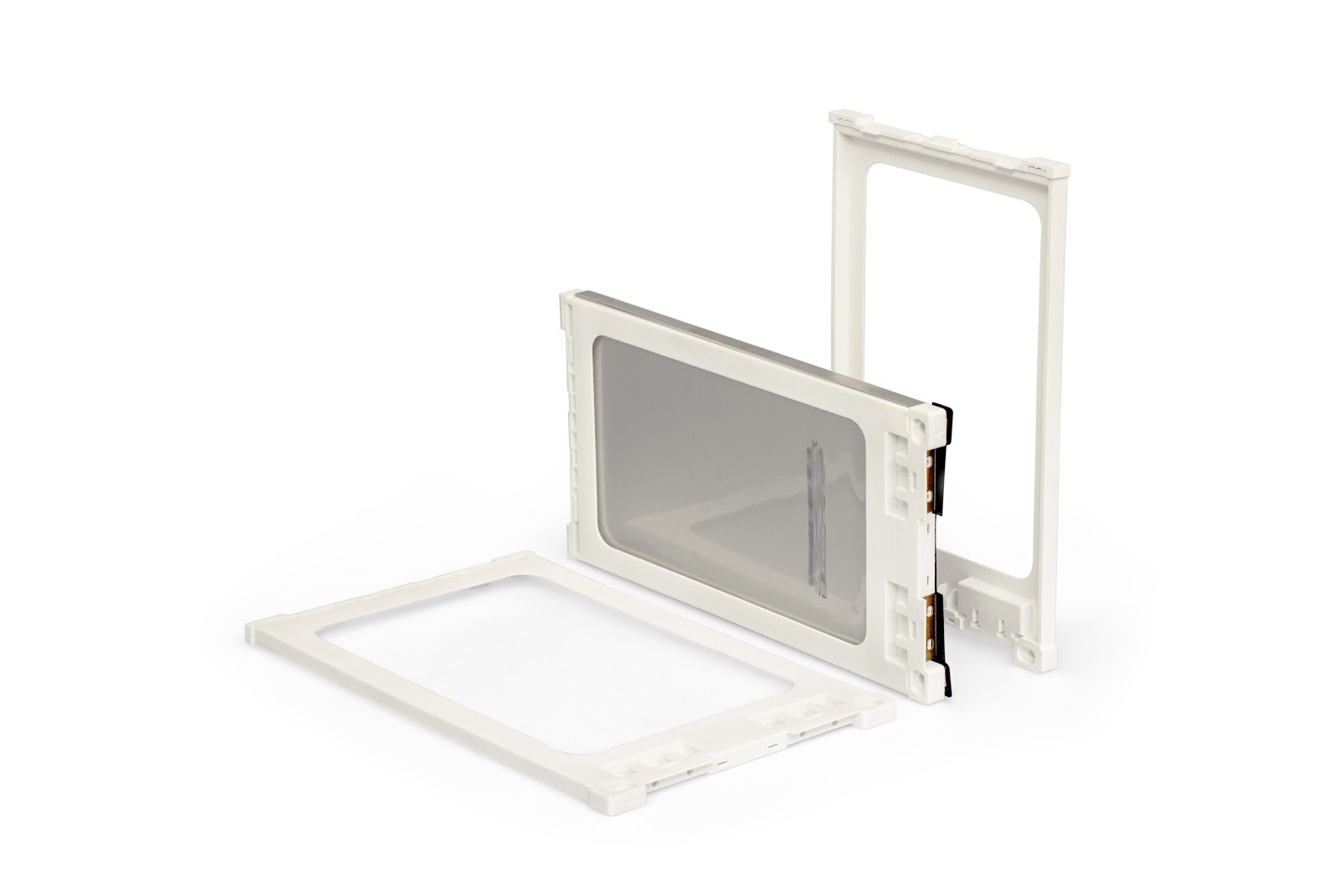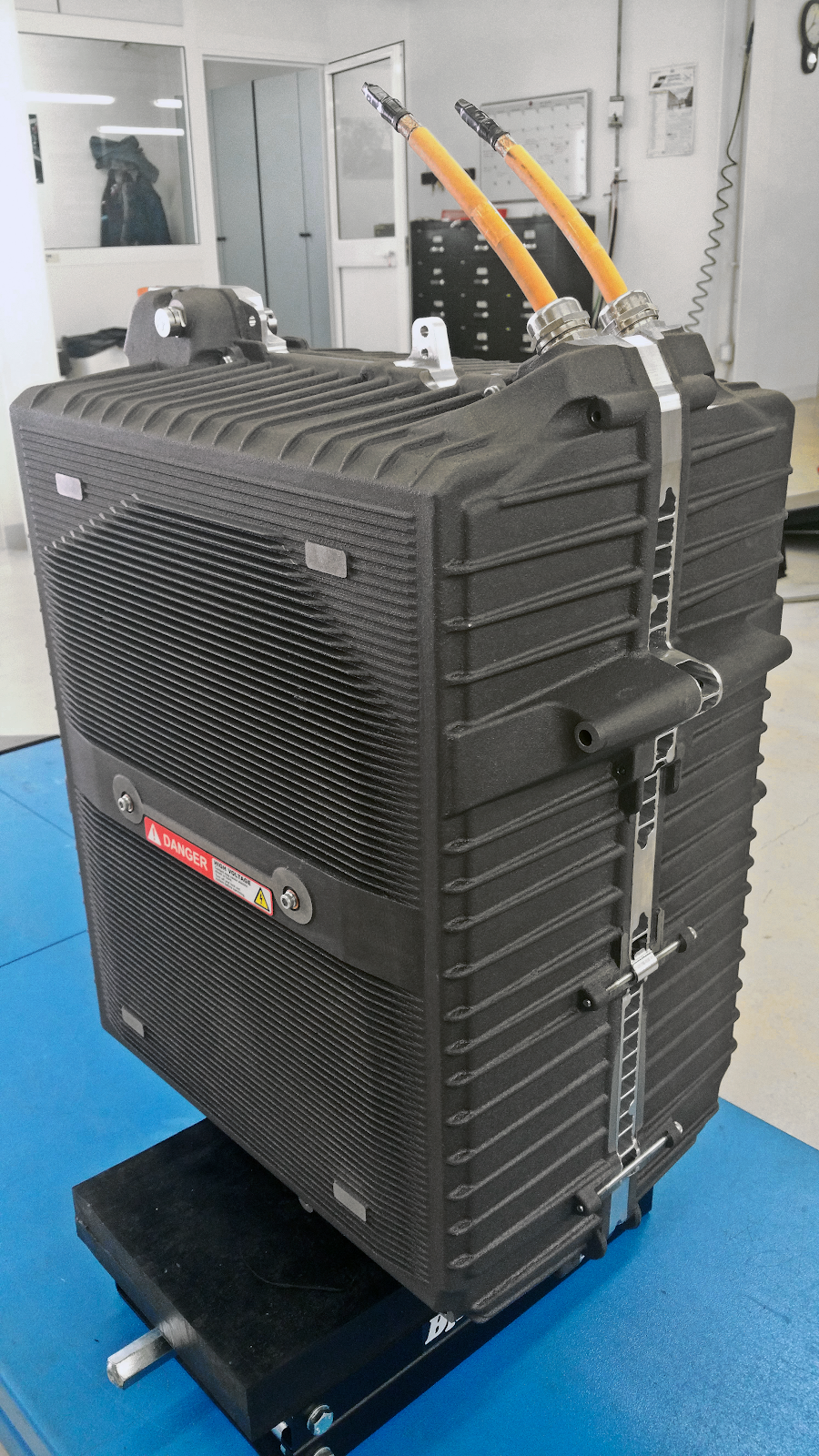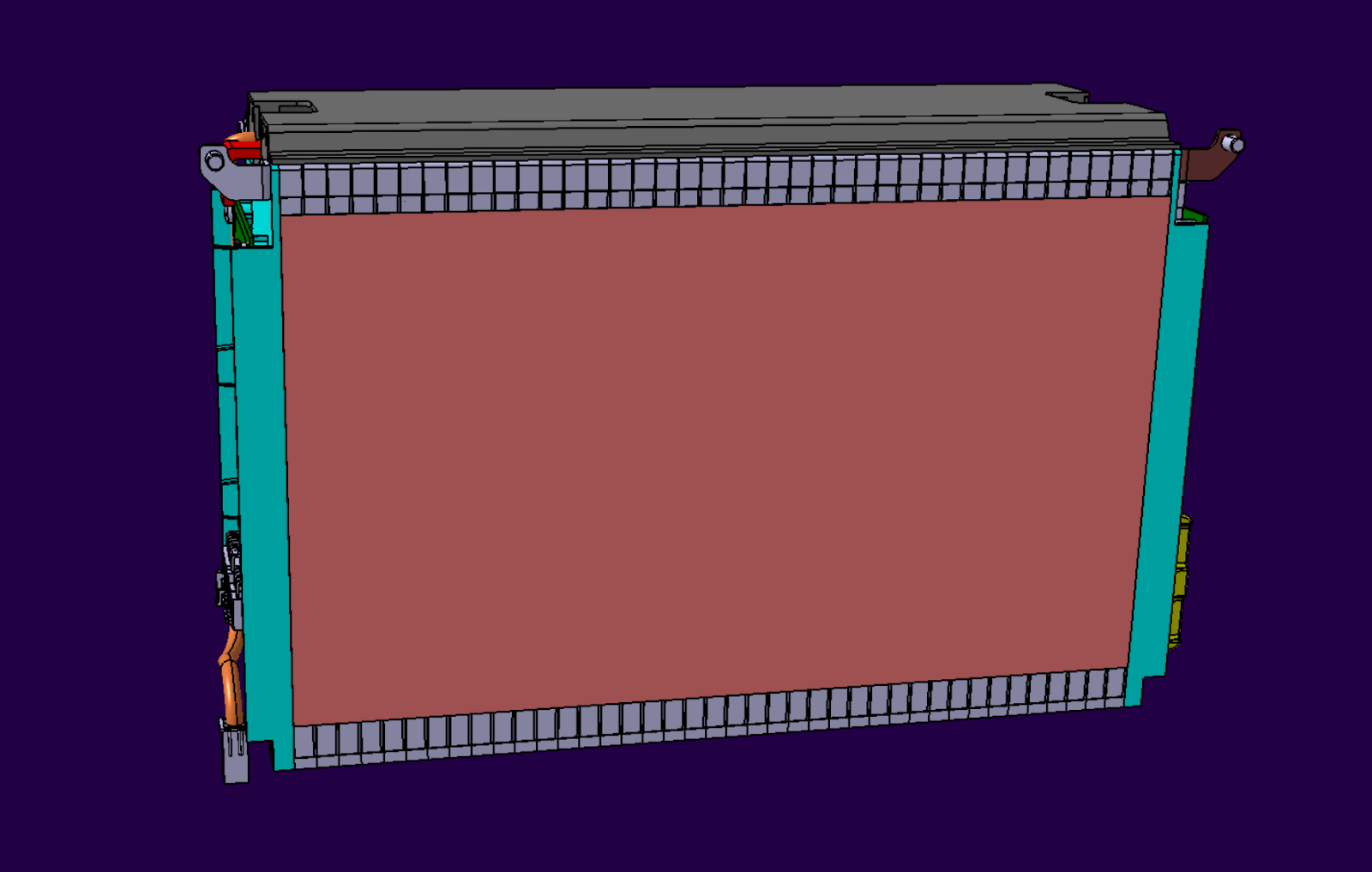Highlighting new applications for advanced 3D printing materials, CRP Technology has shared a case study showing how Windform FR2 was used by Energica Motor Company, an Italian manufacturer of electric motorcycles, to manufacture cell pouch frames for its battery pack prototypes.
Earlier this year 3D printing materials manufacturer and additive manufacturing service supplier CRP Technology released its Windform FR2 material. The new material joins the company’s Windform FR1 product in its TOP-LINE family of composite materials for additive manufacturing, designed specifically for SLS additive manufacturing.
Both materials are flame retardant and reinforced. While flame retardant materials are not new to the 3D printing market, there is a lack of reinforced flame retardant materials. To address this gap in the market, and provide a solution to end-users, Windform FR1 is reinforced with carbon fiber, whereas the FR2 is instead filled with glass fiber, making it an electrical insulator. The material properties extend applications for the Windform FR2 compared to its predecessor – for example in the high-performance world of motorbike racing.

High-performance sustainable motorcycles
The Energica project was launched by CRP in 2010 with the aim of creating high-performance sustainable motorcycles. The enterprises have a longstanding partnership, with Energica having used CRP’s materials in the development of its electric vehicles for the last few years.
The company 3D printed parts of its street-legal electric motorcycle, the Energica Ego, using CRP materials, as well as other models including its Bolid-E motorcycle developed with Samsung Electronics. CRP also acted as Energica’s technological partner for the 2019 FIM Enel MotoE World Cup (and still is), where each of the competing teams used the Energica Ego Corsa. CRP’s Windform composite 3D printer materials were used heavily in the vehicle’s development stages, and also feature in end-use components as well.
With Energica being the single manufacturer for the MotoE, the firm has access to an exclusive testing ground for trying out new technological solutions, using professional racing drivers. Such support has proved incredibly beneficial for the company’s R&D, both for the racing and production sides.
3D printing for high-energy cells
Energica’s motorcycles use a high-energy lithium polymer (Li-NMC) battery, which is contained in a sealed housing. This includes battery cells, the Battery Management System (BMS) and all the necessary systems to ensure the safety of the vehicle. The company has designed and adopted a patented cooling system for the battery pack that uses specific ventilation paths that limit the stress on the batteries. The cooling system provides benefits to the performance of the vehicle, as well as the life of the battery.

Energica’s R&D department is constantly researching new cells that are placed on the market in order to determine their suitability for industrial production. In doing so, the company intends to ensure that it is using the latest and most advanced technology. The evaluation process starts off with validation and initial screening of the single cell. After, Energica then performs testing on battery pack prototypes on the road.
To carry out tests on some pouch cells, a team of engineers at Energica decided to provide each pouch cell with a surrounding case, in order to provide support and reinforcement. The casings had to be produced with a high-performance material with excellent mechanical properties, in order to withstand the testing process while meeting Energica’s performance demands. Having previously relied on CRP’s solutions for demanding applications, Energica opted to use SLS technology with Windform FR2, based upon the company’s needs for the selected material, and analysis of the 3D files of the application.
“Having built functional prototypes of pouch cell casings for various tests, including road tests,” explains Engineer Franco Cevolini, CTO and VP at CRP Technology, “it was clear we should use a material with specific characteristics, namely: polyamide-based material, electrically insulated, stiff, resistant to temperature and flame retardant.”

Windform FR2 was selected as it meets the demanding requirements. It is a stiff, flame-retardant polyamide-based glass fiber reinforced material with electrical insulation. This combination of characteristics makes it an ideal solution for manufacturing parts like casings of electrical and electronic components in the automotive industry, or lighting and appliances for consumer goods.
Cevolini explains that “flame retardant characteristics are very important because it guarantees self-extinguishing in case of operating anomalies, which are a result of a temporary voltage peak, with consequent localized melting, followed by combustion initiation. [Additionally] the material chosen for the pouch casing had to have a high mechanical performance in order to guarantee an overall stiffness to the battery pack prototype, in order to withstand the volumetric expansion that cells undergo during the charge and discharge cycles.”
Once CRP received approval from Energica, the company 3D printed and delivered the pouch casings using SLS 3D printing and the Windform FR2 material. Energica was able to carry out all its necessary tests on the battery pack prototype according to its protocols. Energica had identified potential issues related to the pouch cell, specifically regarding swelling and heat rejection. In both instances, the Windform FR2 and laser sintering technology were able to overcome areas of concern.

3D Printing materials for demanding applications
During the charge and discharge cycle of a pouch cell battery pack, gas generation may result in swelling. Giampiero Testoni, CTO at Energica Motor Company explains, “In a test-ready battery pack prototype (seen below), each cell must be in position and not move. Stability must be assured by the cell casing.” The cell casings have a critical function and must be able to accommodate any swelling without failure.
Energica was guided by CRP to ensure the required high level of precision was possible with SLS and Windform FR2. Testoni notes that the 3D printed cell casings, “allow a certain degree of freedom of movement to swell and contract without deforming, without going out of position, without interfering with one another.”

Another issue for consideration is that of heat rejection. The swelling of a pouch generates heat, and this heat needs to be dissipated. To enhance this process the pouch cell and holder were attached to a metal plate with dual lateral structures. The plate serves to cool as heat is drawn away by the metal and then dissipated by the lateral structures, working in unity with the patented Energica cooling system.
The figures below show how the process operates and where the heat deformation may occur. It is important to have a proper heat management system in place, as is deformation occurs then the screws may generate sparks – leading to a fire.


The tests performed on the pouch cell casing in Windform FR2 glass-fiber reinforced and flame-retardant composite material showed maintenance of the required stiffness, and no deformation with the increase in heat.
“When a polymer begins to heat up, it loses its mechanical characteristics and undergoes deformation,” adds Engineer Franco Cevolini. “It does not happen with Windform FR2 because it is a composite material and it preserves its stiffness. Windform FR2 deflection temperature under load is higher than any other non-composite materials with the same flame-retardant characteristics”.
The demanding requirements of motorsport are a useful proving ground to test CRP’s high-performance materials. Click the links to learn more about Windform materials and CRP Technology.
The nominations for the 2020 3D Printing Industry Awards are now open. Who do you think should make the shortlists for this year’s show? Have your say now.
Subscribe to the 3D Printing Industry newsletter for the latest news in additive manufacturing. You can also stay connected by following us on Twitter and liking us on Facebook.
Looking for a career in additive manufacturing? Visit 3D Printing Jobs for a selection of roles in the industry.
Featured image shows 3D printed pouch cell casings manufactured by CRP Technology using selective laser sintering technology and Windform® FR2 for testing. Photo via CRP.


